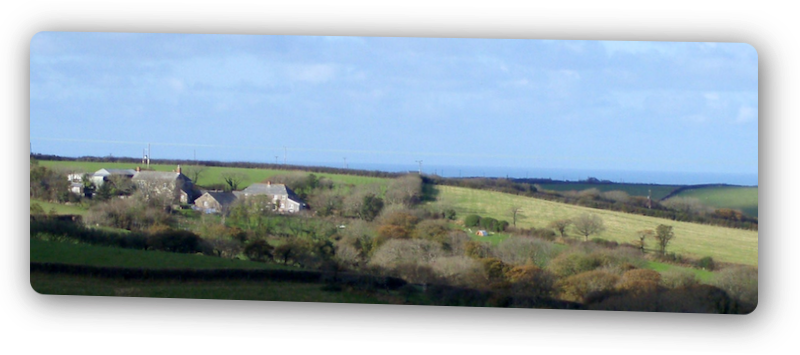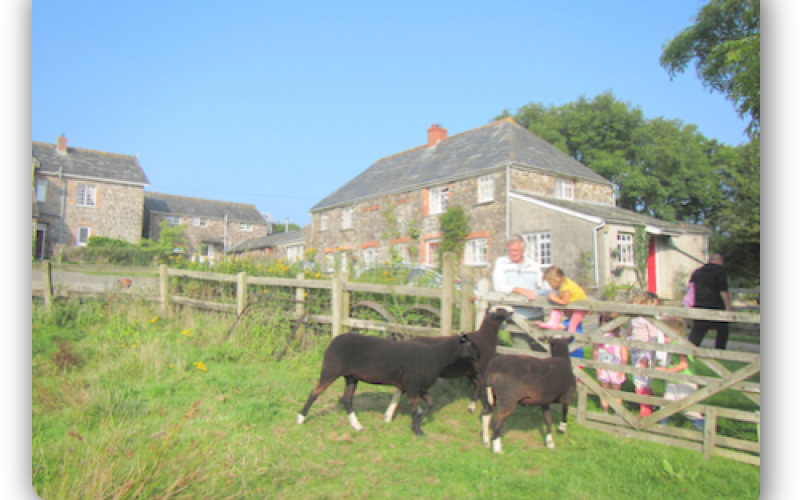In 2007, Trelay cohousing community purchased a farm with several holiday cottages which had residential planning permission. We made the Farmhouse into the co-house with a residential flat above, subdivided a few of the houses and built some new log cabins, so we now have 12 living spaces. Yes, we call them living spaces, not dwellings. Our own living space is quite separate from the others; each has its own front door.
However, we do share things much more than people would on a housing estate. We share the farm, animal care, vegetables, eggs and the barns. Other Trelayers hang their washing on my washing line from time to time, if the other lines are full; we share meals, ladders and lawnmowers; and when I went into the flat of my neighbour who is currently away, I found there was a man in the bath!

The community consists of twenty adults and eight children with another one on the way. The adults range in age from mid-twenties to nearly 70, with a very large range of backgrounds and skills. We all own everything and we have one single address, one broadband line, one electricity bill and one farm holding number. The Council makes one rubbish and recycling collection and we have no street lights of course, so we don’t cost the Council much. All legal and correct, and in general we find the authorities in Cornwall supportive and helpful.
We are not a low-budget ‘hippy’ community. (Well, maybe we are a bit hippyish at times, but we don’t like the word thrown at us as if it is an insult.) The property is worth about £2 million and when we started, we took a mortgage of over £800,000. This is the responsiblity of our non-profit company which owns everything, freehold and leasehold. New people either contribute cash or pay their share of the mortgage, or both. This is very equitable: we don’t need to judge new applicants by the colour of their money. In fact, we try not to judge new applicants at all. We ask people who want to come to live with us to sign our covenant, which states our principles and ethics very simply, and to live side-by-side by us for a while, to see if they feel they fit in. They will have faults, of course: we all have faults. In a community it is necessary to live alongside people with faults, and this is difficult, one of the reasons people choose not to join after all.
The postman brings us a large pile of envelopes and we sort them out into our pigeon-holes in the dining-room. He’s great, he understands how we live. He knows he can walk in without knocking and leave things on the table, he accepts signatures from anyone for anything, and wasn’t abashed at all when he walked in and found us all sitting in a circle holding hands. (We were having a minute’s silence for the refugees, but we all burst out laughing!)
Trelay has been developing for 9 years now. Our living spaces are full and we have a very warm and supportive tribal feeling. We resolve our conflicts against a background of kindliness and good-will. Last week we had a whole week’s immersion in non-violent communication with a live-in teacher, who helped us understand that we will only all be happy and have our own needs met if eveyone else in the community is happy too, and has their needs met. Well, the teacher was here for a week, but we fitted our learning round our day-to-day activities: communal meals, animal care (we raise our own meat), digging huge trenches for a new heat pump system, weeding the herb garden, spending quality time with our children – with some people going off-site to do money-earning jobs too, of course.
We are currently designing a new community centre with a function hall which will give Trelayers the opportunity to earn their living on-site. And we are building a shop and a small holiday complex. Life at Trelay is never boring!

